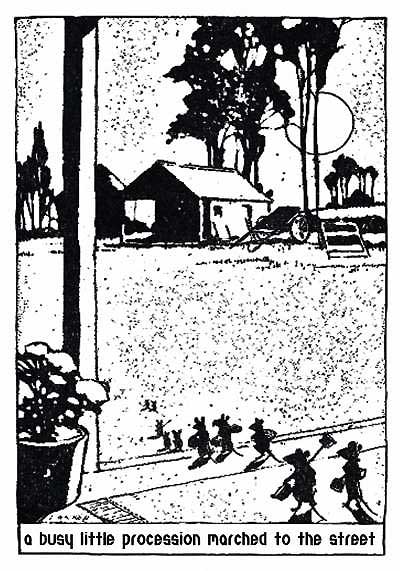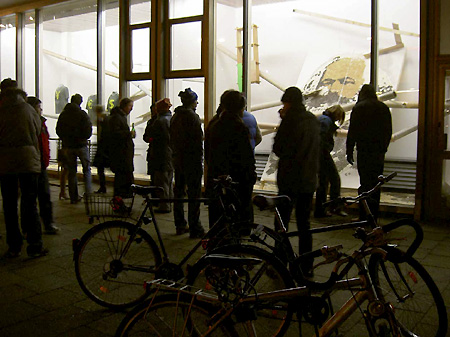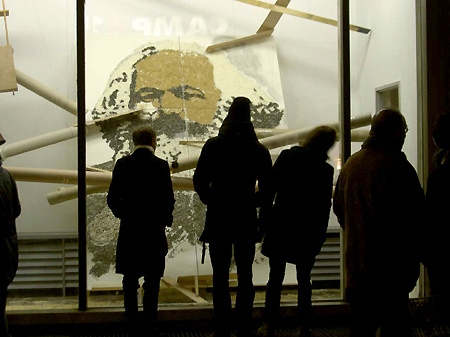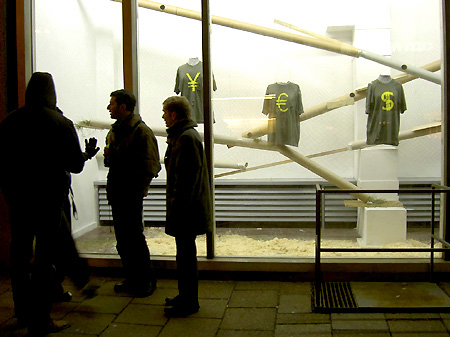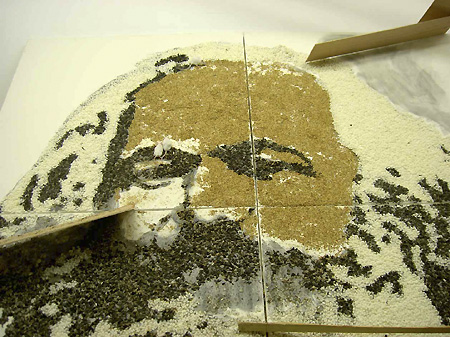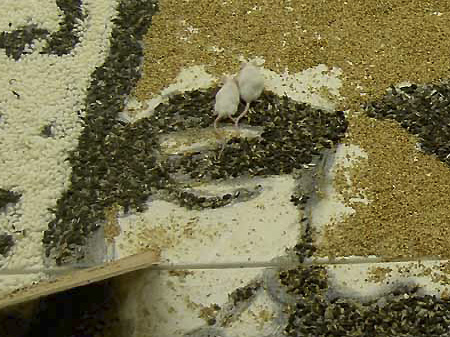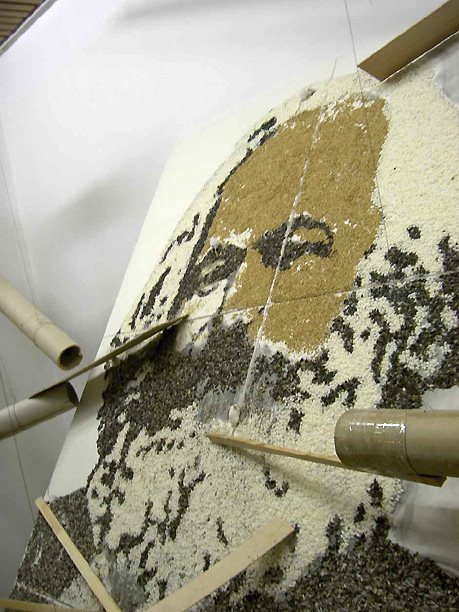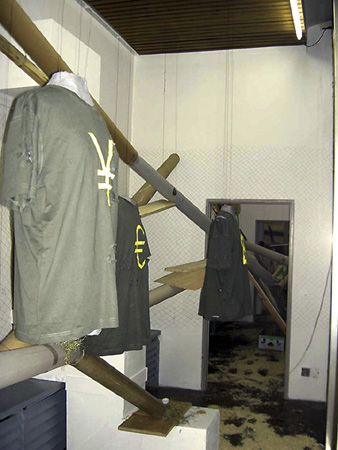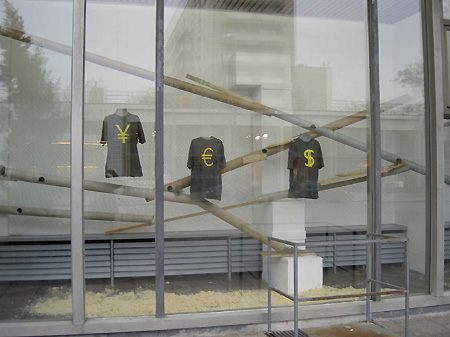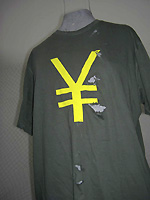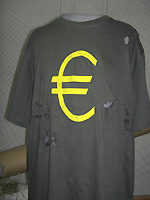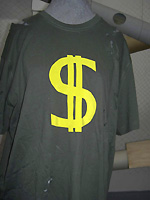January 22– February 20, 2005

Drawings and other paperwork
VTO Gallery – 96 Teesdale Street – London E2 6PU
Curated by Thomas Kilpper in collaboration with Patrick Heide
Opening: January 21, 2005 from 6-10 pm
Lucie Beppler, Bernadette Corporation, Michael Beutler, Heide Deigert, Emmanuel Depoorter, Thomas Erdelmeier, Jeremy Glogan, Alex Hamilton, Thomas Kilpper, Dirk Krecker, Janne Lervik, Max Mason, Nils Norman, Olivia Plender, Miki Tschur, Klaus Weber, Amelie von Wulffen
The exhibition from our cold hands brings together drawings and other works on paper by 17 young artists with a wide variety of working methods and strategies. Works that contradict or complement each other, works that question and explore the limits and possibilities of this medium.
Klaus Weber shows mushroom drawings, which are created in a process lasting several days, solely through the spores of the mushrooms. It is thus quasi a form of “automated drawing” without direct drawing intervention by the artist.
Conversely, Heide Deigert shows distorted self-portraits that look like they were created by a computer, but are actually drawn by hand.
Alex Hamilton takes photographs of the Turner House in East London as a starting point, copies them, retouches and draws them into the copy, copies the drawing again, draws again into the copy and so on, until it is no longer clear how the whole thing was created and how it is to be defined: photo, drawing or copy?
In her comic master-piece, Olivia Plender questions the cliché of the ‘masterpiece’, draws her work in a classical style, but always presents it as a copy. She thus turns the copy into an original work of art and keeps the actual original under lock and key.
In contrast, Micki Tschur, who lives in the USA, shows very personal stories – excerpts from her sketchbook – “unfinished stories” as she calls them – as original drawings.
Norwegian-born Janne Lervik has her diary- and comic-like drawings tell bizarre stories about her adopted home Berlin.
Max Mason will produce an edition in the form of a CD for the exhibition. It contains a soundpiece, a kind of sound drawing that can be heard / ‘seen’ in the exhibition – and a classical drawing that cannot be seen in the exhibition. Only those who purchase the edition can see this drawing – e.g. at home on the screen – for everyone else it remains a virtual picture.
Dirk Krecker cuts the keys of old, mechanical typewriters into the paper and creates a minimalist pictorial language: he transforms the movable letters – printing tools – into his drawing pen and supplies fighter planes for this exhibition that are about to attack or crash.
Emmanuel Depoorter and Thomas Erdelmeier produce large-format drawings – Depoorter rather follows subjective horror and fear scenarios, whereby Erdelmeier’s text images draw us into an exuberant labyrinth of social questions and fields of conflict.
Lucie Beppler, on the other hand, devotes herself intensively to smaller formats with which she circles around complex themes from the personal and intimate – often injuring and rutting her leaves with cutting tools – she ‘draws’, among other things, with a knife. For this exhibition, she has created works on untreated photographic paper that seem to have been created by chance and that evoke associations with telephone scribbles, as most of us have probably done many times before.
Thomas Kilpper drew with the chainsaw by cutting the entire parquet floor of a basketball hall of the US Army and turning it into a printing block for a woodcut. In this exhibition he shows the former Nazi secret service officers around Reinhard Gehlen, who after the war were ‘trained’ by the CIA to become agents of the Federal Intelligence Service at this location – near Frankfurt.
From a technical point of view, Nils Norman is quite in the present day: in his illustrations he draws primarily on the computer and its software: his pencil is the mouse. With it, he develops a system-critical pictorial world in which his ironic suggestions for repairs and improvements to various social problems flow into.
The artist group Bernadette Corporation, which lives in Berlin and New York, provides a computer-generated image of a blow-job obtained from the Internet for the exhibition. By pulling it onto canvas and stretcher frame, they also question a central cornerstone of artistic production: to what extent do stretcher frames and canvas help a work become real art and a real value?
Jeremy Glogan seems to be faithful to artistic tradition by using brushes, pencils and pencils – but he plays with the different styles of art history, breaking and discarding his work over and over again.
Amelie von Wulffen does not only integrate photography into her drawings, with her overpaintings she creates a completely new basis for her image production. She builds almost dreamlike spaces in order to dedicate herself to private stories or worn out and questionable personalities like Alexander Solchenyzin with delicate strokes in the next moment.
Michael Beutler builds low-tech machines and will produce and distribute on the floor tenfold enlarged ‘Sunkist-Tetra-Pack-boxes’ for the exhibition. Does he thereby provoke a de-constructive game or is it the occupation or use of space?
Thomas Kilpper
Patrick Heide
More information about:
info@vtogallery.com – http://www.vtogallery.com
patrickheide@hotmail.com or phone ++44 (0)790 0215 317
